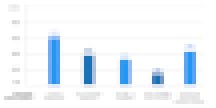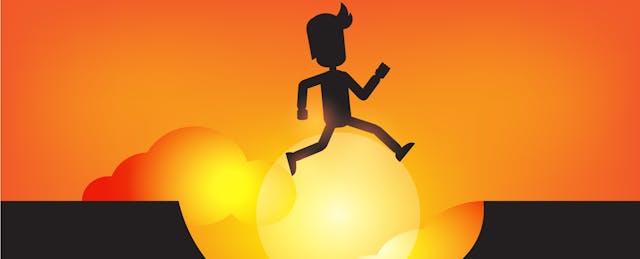Two years ago, my oldest son graduated from high school. I watched proudly as he used his self-determination skills to choose a major and enroll at a college that was an eight-hour drive from home. I stood back and watched . . . as he failed miserably. He returned home after just one semester at college.
While this failure felt terrible at the time, it ended up being the driving force behind the creation of a new high school transition program for students with mild to moderate disabilities.
My son has had an Individualized Education Program (IEP) since second grade. He’s a super smart kid, cursed with my executive functioning challenges and ADHD. I thought he was well-prepared for the transition to life after high school, but soon realized I was wrong. So wrong.
I should have known things were going south when my son told me he wasn’t going to apply for assistance in college (students with IEPs in high school can usually get services in college, too). I encouraged him to change his mind but, instead, he said, “It’s time for me to write this chapter, Mom.” In other words, he was tired of everyone being up in his business. He wanted to go it alone.
There were other warning signs. He stopped taking the medication that helped him concentrate. I knew, because the monthly withdrawal for his prescription from my checking account stopped. His communications with me became more infrequent. When I saw some of his friends around town, they mentioned they were actively playing video games with him online. When he left home, I had proudly noted that he hadn’t taken his gaming console with him. I found out later that he had simply switched to playing games using his computer. That kid was crafty.
The laws change when a student with disabilities turns 18. Legally, I couldn’t get information about him from the college unless I was prepared to go to court. I tried not to pry, but when you’re footing the bill, it’s reasonable to wonder how your investment is doing.
Finally, two months into his college adventure, my son told me that it wasn’t working out and he was going to drop out. I was devastated but not surprised.
Transition Stories
I am not alone. Many parents of students with IEPs have experienced similar frustrations with the transition process after high school and with the progress of their children.
For example, James* has a 20-year-old daughter named Christina, who has severe cognitive delays. Christina will age out of the school supports she receives next year on her 21st birthday. Despite this upcoming deadline, Christina has never worked a paying job. The work program that her school has enrolled her in is a “job sampling” program, which lets her try out a variety of jobs for just FOUR HOURS PER WEEK. So far, she’s worked in a retail store, a pet supply store, and now for a resort in housekeeping. None of these jobs have offered paid employment. James wants to see his daughter living on her own, in a group home and earning money to help support herself. After all, he says, “I won’t be around forever and then who will take care of her? The state? Yeah, right.”
Tom, another parent I know, was so frustrated with the employment options available to his son with Autism Spectrum Disorder (ASD) that he and a business partner bought an old furniture warehouse, then designed a program for their son and other young adults like him. Now, close to 20 students from the local school district have meaningful, inclusive, paid employment assembling and packing materials for a variety of companies.
The Statistics
Of course, not everyone has the resources to find places for their kids to work, or to buy a warehouse to create a program. By law, students are supposed to start transition planning in high school at age 14 or 16 (depending on the state). This happens, but to varying degrees. There are no national transition standards and the metrics on whether kids are successful in their post-school lives vary almost as much as the kids themselves. Further complicating things is that the fact that way a school decides whether a student is prepared for life after high school depends on completely different sets of metrics. For example, some high schools have alternate high school diploma programs.
In the United States, outcomes for young adults with disabilities after high school are not favorable. According to the National Center for Special Education Research:

There is hope, however, for individuals with disabilities to live meaningful and engaged lives after high school. According to the National Council on Disability (NCD), “It takes more than a special education teacher or a transition specialist to improve these practices—it takes the entire school community.” NCD research outlines several practices shown to improve outcomes for the over six million students nationwide with disabilities. These evidence-based practices include:

ONEder Academy
Like other parents, I was frustrated for my oldest son. And I worried about my youngest son, who also had an IEP, and was only a year behind him. Not to mention the concern I felt for other students with disabilities who didn’t have the kind of support networks my kids have!
I looked for school-based programs, but my sons were considered too “high functioning” for life skills classes or job prep classes. I looked for other courses they might take, but most of the transition programming looked like it was from 1950 and was focused primarily on specific job skills: How to stack shelves, How to clean a toilet, How to dust.... I wanted more of a people skills focus for my sons, and others like them. But there weren’t many options.
After searching fruitlessly for a way to make a difference, I collaborated with a team of professionals at ONEder to create a high school transition program for students with mild to moderate disabilities. ONEder Academy’s transition curriculum focuses on the soft skills all students need to be successful as they transition to life after high school, organized into eight courses:
- Identifying Personal Strengths
- Interpersonal Skills
- Cultivating Communication Skills
- Building Self-Advocacy
- Developing Self-Determination
- Identifying and Overcoming Challenges
- Personal Goal Setting
- Exploring Career Options
Every course is aligned to standards and a research-based outcome. And they include real life scenarios—many of which came from the experiences of my sons or my friends’ children—not some theory with no basis in reality.
My oldest son is doing better. He has a full-time job and his own apartment with a group of friends. He’s still not sure about college, but I’m enjoying his employee discount at a coffee shop while he figures it out. We will see how my younger son’s transition goes this fall when he starts college at a nearby state school in a program designed to help kids with IEPs get the support they need to be successful. I’m hopeful, because for us, transition isn’t just our passion; it’s personal.
*No real names are used in this article to protect the identity of the students.



